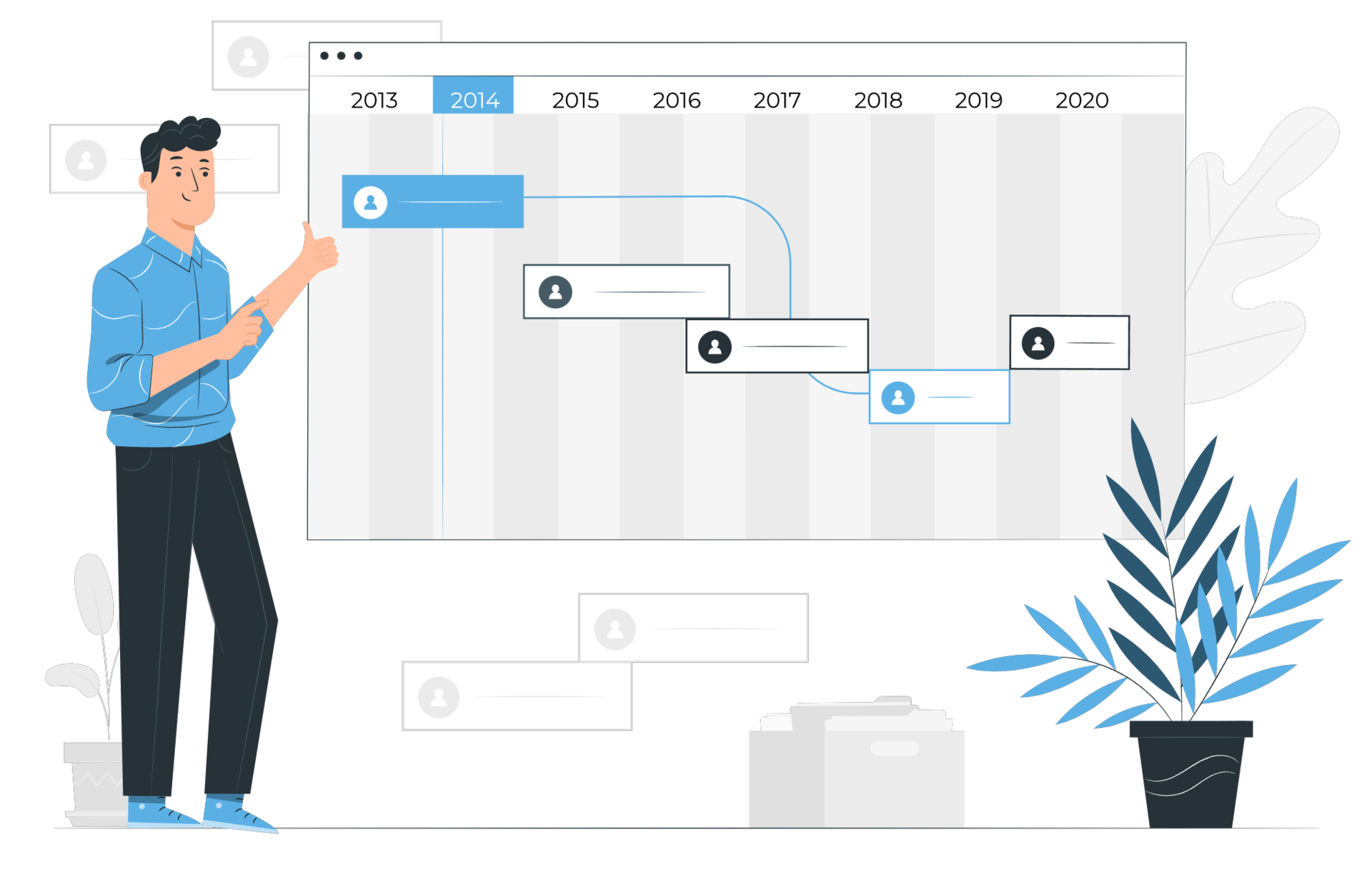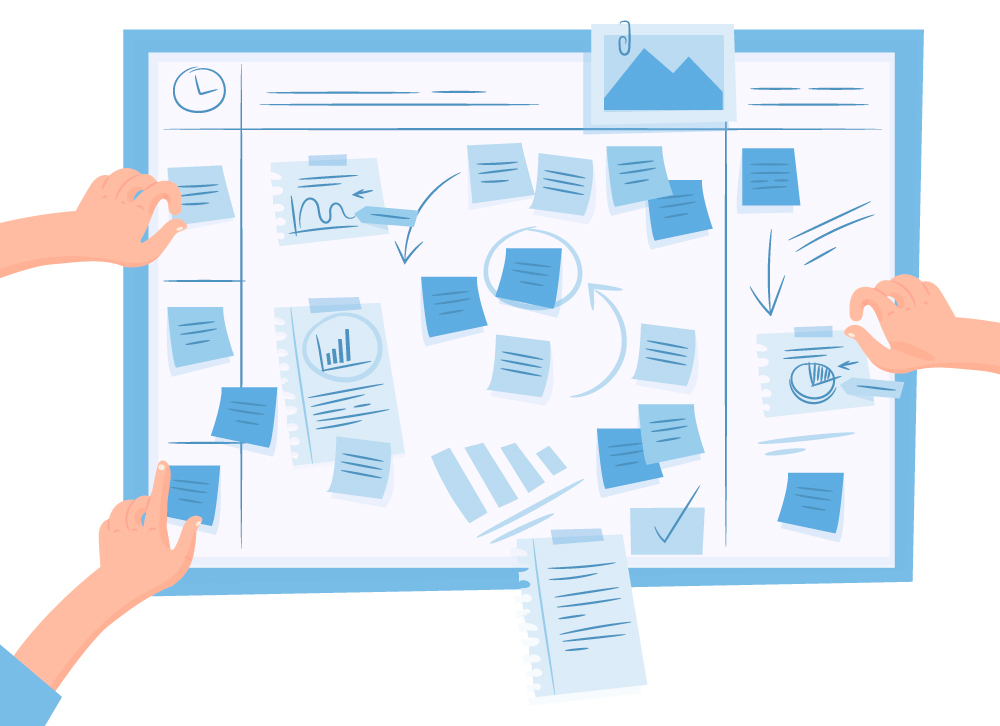Have you ever found yourself scrambling to communicate the ins and outs of a project to your stakeholders and team members? It’s no easy task, that’s for sure.
A simple yet powerful solution is available for this: the project brief.
Whether you’re a seasoned project manager looking for ways to streamline your communication or a team member eager to grasp the big picture without getting lost in the nitty-gritty, this post is for you.
Join us as we delve into the world of project briefs in this blog post. We’ll cover various topics, including the purpose of project briefs and practical guidance on creating them. Whether you’re curious about their importance or seeking step-by-step instructions, this post has got you covered.
So, let’s get started!
What is a Project Brief?
A project brief serves as a concise summary for shareholders, offering an overview of the project without delving into unnecessary details. The brief is concise and to the point, avoiding lengthy explanations and jargon.
The length of the project brief may vary based on factors such as project complexity and the intended audience. It balances providing enough detail to understand the project’s objectives, scope, timeline, and expected outcomes while avoiding overwhelming shareholders with excessive information. It’s like a well-edited manuscript where every word counts.
Keeping the project brief up to date is vital to ensure its relevance. It’s akin to a current events newsflash, capturing the latest developments and adjustments. As the project progresses or circumstances change, the brief evolves accordingly, ensuring stakeholders can access the most recent information. This enables them to make informed decisions based on the project’s current status.
What is the Purpose of a Project Brief?
The project brief serves multiple purposes. Firstly, it provides vital information and clarity. The brief outlines a project’s who, what, when, where, and why and brings everyone up to speed on what lies ahead. It ensures your team understands their roles and how they can contribute effectively.
Secondly, the project brief establishes a common understanding to mitigate risks and avoid confusion. Consider it a helpful agreement when a project charter isn’t in place. Reviewing the brief together lets you confirm the project’s scope, goals, and more. This process helps address any uncertainties and red flags, reducing project risks and preventing wasted time on irrelevant matters.
Lastly, having everyone on the same page is crucial to stay focused. The project brief acts as a compass, guiding the team towards the project’s objectives. It helps prevent scope creep and ensures everyone remains aligned, working towards shared goals.
Ultimately, a project brief acts as a roadmap, guiding the project’s trajectory from inception to successful completion while fostering collaboration and minimizing misunderstandings.
Who Writes a Project Brief?
In the world of project management, the project brief takes centre stage, and the project manager plays the lead role in crafting this important document. The project manager is responsible for creating the project brief, which acts as a guiding light for the entire team.
 The project manager doesn’t necessarily conjure up the project brief alone. They collaborate with various stakeholders and resources to ensure the document accurately captures the project’s mission. For instance, the sales team or account manager may contribute their insights and initial information during the sales-to-production hand-off process.
The project manager doesn’t necessarily conjure up the project brief alone. They collaborate with various stakeholders and resources to ensure the document accurately captures the project’s mission. For instance, the sales team or account manager may contribute their insights and initial information during the sales-to-production hand-off process.
While others may contribute, the project manager ultimately owns the responsibility for the project brief. They ensure that it’s complete and comprehensive, leaving no stone unturned. It’s their job to ensure the team and stakeholders fully understand and embrace all aspects of the project brief.
So, in summary, the project manager takes the lead, working alongside others to create a well-rounded project brief that sets the stage for success.
What are the Elements to Include in a Project Brief?
The elements to include in a project brief can vary depending on the project and the stakeholders involved. However, here are some common elements that are typically found in a project brief:
Project Overview
Provide a concise description of the project, including its purpose, objectives, and the problems it aims to solve.
Goal Statement
Clearly state the project’s goals and deliverables, outlining what needs to be achieved upon completion.
Estimated Timeline
Include a projected start and end date for the project and key milestones and phases along the way.
Background Information
If necessary, provide relevant background information about the project, including any previous or related initiatives.
Success Metrics
Define specific metrics or criteria that will be used to measure the project’s success.
Target Market or Audience
Identify the project’s specific target market or audience, especially for creative or marketing-related endeavors.
Budget Information
Considering the context and stakeholders, consider including a summary of the project’s budget or financial constraints.
Remember, these elements serve as a starting point, and you can tailor your project brief to fit your project’s and stakeholders’ specific needs and requirements.
How To Write a Project Brief?
When it comes to writing a project brief, its length should align with the project’s scope and size. A more complex job may require a longer brief. Let it flow naturally, adding information as necessary. While there’s no one-size-fits-all approach, here’s a general guide to help you get started:
Relevant Context/Background
Before diving into the details, provide the necessary context to set the stage for your project. Explain the factors that led to the initiation of this project. Highlight any industry trends, market demands, or internal challenges that necessitated its implementation. By sharing this background information, stakeholders will better understand why the project is important and how it fits into the larger organizational landscape.
Project Description
 Offer a concise yet comprehensive description of your project. Clearly articulate its purpose, scope, and key deliverables. Include any unique features or innovative aspects that make your project stand out. By providing a clear project description, you ensure that everyone involved has a shared understanding of what the project aims to accomplish, reducing the chances of miscommunication or misalignment down the line.
Offer a concise yet comprehensive description of your project. Clearly articulate its purpose, scope, and key deliverables. Include any unique features or innovative aspects that make your project stand out. By providing a clear project description, you ensure that everyone involved has a shared understanding of what the project aims to accomplish, reducing the chances of miscommunication or misalignment down the line.
Project Objectives
Define your project objectives using the SMART framework: Specific, Measurable, Achievable, Relevant, and Time-bound. Be specific about what you want to achieve, quantify it with measurable indicators, and ensure it is realistic and aligned with the project’s scope, relevance, and time constraints. SMART goals provide a clear roadmap for success, enabling you to track progress and make necessary adjustments along the way.
Target Audience
Identify and define your target audience—the individuals or groups benefiting from your project’s outcomes. Understand their needs, preferences, and pain points. This knowledge will help you tailor your project’s approach, messaging, and deliverables to ensure maximum impact. Whether it’s customers, internal teams, or a specific market segment, a deep understanding of your target audience is crucial for project success.
Project Timeline
 Craft a well-defined project timeline that outlines key milestones, tasks, and deadlines. This timeline provides a roadmap for the project’s execution, enabling effective resource allocation, task prioritization, and progress tracking. Break down the project into phases or stages, assigning estimated durations to each. Consider dependencies and critical paths to ensure a realistic and achievable timeline.
Craft a well-defined project timeline that outlines key milestones, tasks, and deadlines. This timeline provides a roadmap for the project’s execution, enabling effective resource allocation, task prioritization, and progress tracking. Break down the project into phases or stages, assigning estimated durations to each. Consider dependencies and critical paths to ensure a realistic and achievable timeline.
Success Metrics
Determine the metrics that will gauge the success of your project. Establish key performance indicators (KPIs) aligned with your objectives. These metrics may include sales figures, customer satisfaction ratings, cost savings, or other quantifiable measures demonstrating project impact. Defining success metrics enables you to track progress, evaluate outcomes, and make data-driven decisions throughout the project lifecycle.
Aligning with Stakeholders and the Project Team
The final step in crafting an effective project brief is to bridge the gap between the project and its stakeholders and team members. It’s essential to make the brief relevant to them by incorporating resources, defining the budget, outlining a communication plan, and clarifying roles and responsibilities.
You can include relevant links or attachments that provide additional context to enhance the brief. These may include a detailed project plan, a RACI chart indicating roles and responsibilities, a proposal, or a roadmap. By making these resources easily accessible, you empower stakeholders and team members to delve deeper into the project’s intricacies and foster a shared understanding.
Strike a balance between providing valuable information and overwhelming the reader. Remember, the goal is to ensure that the brief effectively communicates the scope, objectives, and expectations to the stakeholders and team members, setting the stage for successful collaboration and execution.
Project Brief Vs Executive Summary
A project brief and an executive summary serve different purposes in conveying information.
A project brief is a comprehensive document that outlines the objectives, scope, deliverables, and stakeholders of a project. It provides detailed information for the project team to understand its intricacies.
On the other hand, an executive summary is a concise overview of a project, highlighting its key points, benefits, and recommendations. It is designed to give busy executives a quick understanding of the project without diving into the nitty-gritty.
So, while a project brief delves deep into the project, an executive summary offers a high-level snapshot for decision-makers.
Project Brief Vs Project Summary
A project brief, often prepared at the project’s initiation, outlines the objectives, scope, deliverables, and key stakeholders. It sets the foundation for the project and guides the team throughout its execution.
On the other hand, a project summary is a concise overview of the project’s outcome, achievements, and lessons learned. It’s typically created at the project’s closure to capture the key highlights and provide insights for future projects.
While a project brief focuses on planning and guidance, a project summary summarizes the project’s key outcomes and takeaways.
Project Brief Vs Project Plan
Alright, so you already know about the differences between a project brief and an executive summary, as well as a project brief and a project summary. Now let’s discuss the distinction between a project brief and a project plan.
 A brief provides a concise overview of the objectives, scope, stakeholders, and high-level deliverables. It serves as a starting point, setting the direction and clarifying the project’s purpose.
A brief provides a concise overview of the objectives, scope, stakeholders, and high-level deliverables. It serves as a starting point, setting the direction and clarifying the project’s purpose.
On the other hand, a project plan is a detailed roadmap that outlines the specific tasks, timelines, resources, and dependencies required to accomplish the project objectives. It dives deeper into the nitty-gritty of how the project will be executed, monitored, and controlled.
In simple terms, while a project brief paints the big picture and answers the “what” and “why” of the project, a project plan gets into the specifics and tackles the “how” and “when” aspects. Both are crucial documents, but they serve different purposes and cater to different levels of detail.
Project Brief Best Practices
When it comes to writing a project brief, there are a few best practices that can help you create a clear and effective document. Let’s dive into these practices:
- Finalize Project Details First: Before starting your project brief, ensure all the details are finalized. This includes understanding the project objectives, scope, timelines, and resources. A well-defined project will result in a more accurate and focused brief.
- Keep it High Level: Focus on the highest-level elements of your project in the brief. It should provide an overview and capture the essence of your project without getting into unnecessary details. Save the specifics for other project documentation.
- Provide Context: Ensure your project brief is easily understandable to a casual reader. If any element requires context, take a sentence or two to explain it briefly. This will help your readers grasp the purpose and significance of the project.
- Know Your Audience: Consider the intended audience of your project brief. Tailor the content to their needs and preferences. For example, if it’s for marketing purposes, emphasize the project’s successes and innovations. If it’s for internal stakeholders, focus on scheduling and budget information.
- Make Updates When Information Changes: Keep your project brief up to date. If any project details change, ensure your brief accurately reflects those changes. This will help maintain consistency and avoid confusion among your stakeholders.
Remember, clarity is key, so focus on providing the necessary context and high-level information to engage your readers and set the stage for project success.
Wrapping Up
So, here it is – the project brief, your ultimate tool for project success. With this comprehensive document in hand, you’ll have a clear roadmap to guide your project from start to finish. Use it as your go-to reference, ensuring that every stakeholder and team member understands the project’s objectives, scope, and key deliverables.
Further Reads:
Project Scope Management: Definition, Importance & Process!
Client Brief: What is it and How to Write it? (Steps Included)
Project Baseline: What is it, Its Importance, & How to Set it?
Project Documentation: What is it & How to Manage it?
Status Report: What is it & How to Create One?
Project Calendar: What is it & How to Create it?

Related posts
Bit.ai | Watch to Learn More
What is Bit.ai?
Bit.ai is an innovative AI-driven knowledge and Document Managment suite designed to empower knowledge workers by streamlining the creation of, documents, wikis, and notes. With an intuitive interface and seamless integration, Bit.ai acts as a versatile assistant to help you collaborate, generate, organize, and visualize your ideas effortlessly. Whether you are drafting a report, managing a project, collaborating with your team or clients, or brainstorming new concepts, Bit.ai brings intelligence and creativity to every aspect of your work process.


